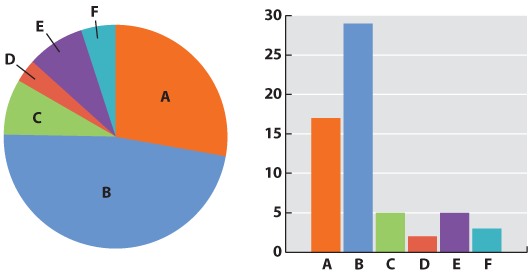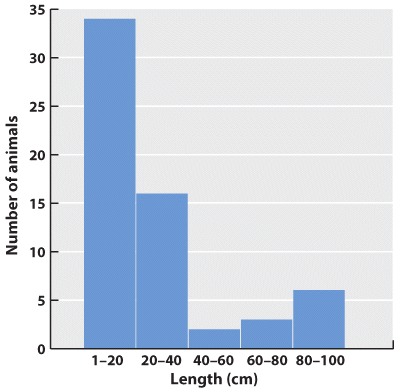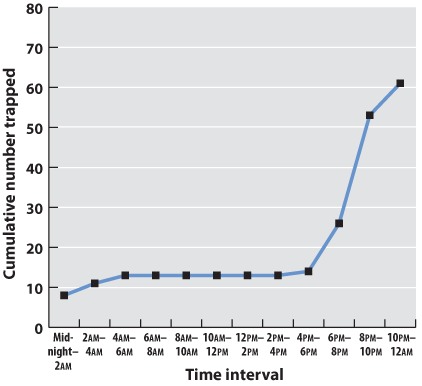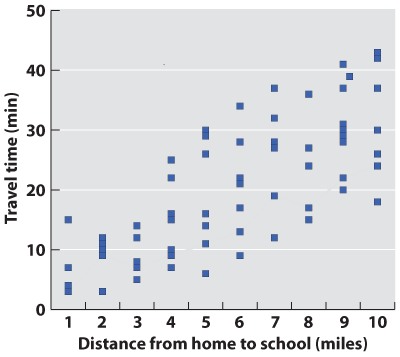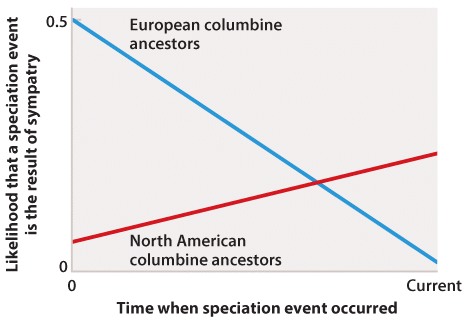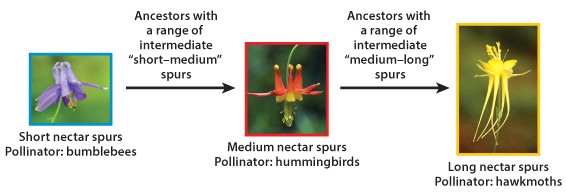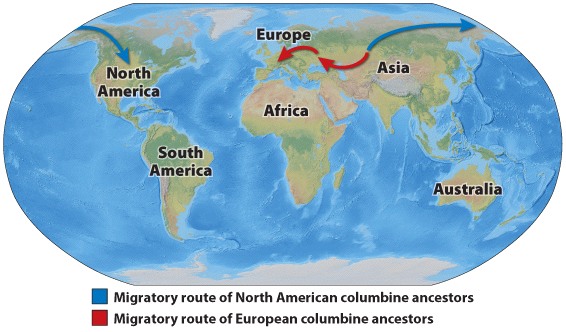Chapter 1. Mirror Experiment Activity 30.16
Mirror Experiment Activity 30.16
The experiment described below explored the same concepts as the one described in Figure 30.16 in the textbook. Read the description of the experiment and answer the questions below the description to practice interpreting data and understanding experimental design.
Mirror Experiment activities practice skills described in the brief Experiment and Data Analysis Primers, which can be found by clicking on the “Resources” button on the upper right of your LaunchPad homepage. Certain questions in this activity draw on concepts described in the Data and Data Presentation primer. Click on the “Key Terms” buttons to see definitions of terms used in the question, and click on the “Primer Section” button to pull up a relevant section from the primer.
Experiment
Background
North America and Europe are each home to roughly twenty species of columbine. Hummingbirds, hawkmoths, and bumblebees are all found in North America, and pollinator shifts between these organisms have led to the formation of new columbine species on this continent – species that have evolved different flower morphologies to accommodate the tongues of pollinators. However, fewer types of pollinators exist in Europe (in fact, hummingbirds aren’t even present on this continent), and flower morphologies are similar among different European columbine species; this suggests that pollinator shifts did not play a large role in the formation of new columbine species in this region. Did pollinator shifts play any role in European columbine speciation? Could other factors – such as environment – have contributed to the formation of new columbine species in either Europe or North America?
Hypothesis
Given that the number of columbine species is (roughly) equivalent in North America and Europe – but that there is a lack of pollinator diversity in Europe – Jésus Bastida and colleagues speculated that pollinator shifts played a relatively small role in European columbine speciation. They hypothesized that “environmental shifts” played the major role in European columbine speciation: that is, columbine species primarily diversified upon encountering new habitats. In contrast, Bastida and colleagues predicted that North American columbine diversity was the result of both environmental shifts and pollinator shifts.
Experiment
Using complex computer programs, Bastida and colleagues compared three genetic sequences found in columbines taken from Asia, North America, and Europe. Using this data, researchers constructed a new columbine phylogenetic tree that pinpointed major radiation events in the evolution of these plants (Figure 1). Scientists were also able to infer how many pollinator shifts and environmental shifts occurred in European and North American columbines, and where the earliest columbine ancestor originated.
Results
Bastida and colleagues determined that more pollinator shifts occurred in the ancestors of North American columbines than of European columbines. However, the ancestors of European columbines experienced more environmental shifts. Thus, pollinator shifts played a large role in North American columbine speciation, and a smaller role in the diversification of European columbines.
Source
Bastida, J. M., et al. 2010. Extended phylogeny of Aquilegia: the biogeographical and ecological patterns of two simultaneous but contrasting radiations. Plant Syst. Evol. 284: 171-185.
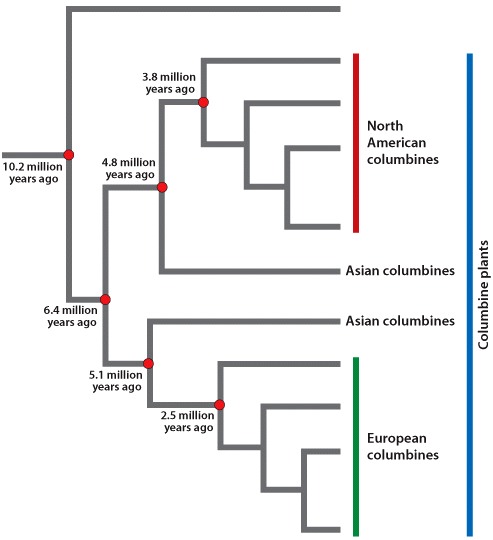
Question
Using an approach similar to that outlined in Fig. 30.16, Bastida and colleagues were able to predict how many pollinator and environmental shifts occurred in European and North American columbine lineages. They obtained data similar to that below. Which of the following statements is true of this data?
| A. |
| B. |
| C. |
| D. |
| E. |
